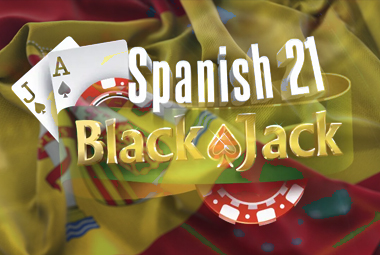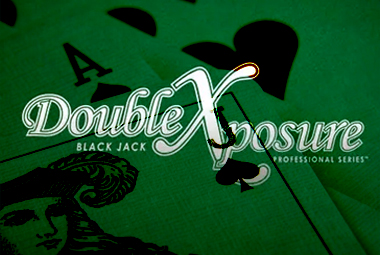Now that 2024 has begun, it is the ideal moment to review the top five blackjack variations that are now sweeping the gaming industry connections hint.
Every variation of blackjack, from the time-honored versions like the popular European and American versions to the innovative new versions that give the game a fresh spin, provides a unique and exciting gaming experience.
These variations are essential to check out whether you’re a novice or an experienced player.
A Brief and Unclean Past
A brief and unclean historyBlackjack’s roots are in the game “Vingt-et-Un,” which translates to “twenty-one” in French, and dates back to the 17th century in France. The game didn’t get its current name until it was transported over the Atlantic to America.
connections hint became a mainstay in saloons during the 19th-century Gold Rush, drawing players in with its straightforward yet sophisticated action. The game gained popularity swiftly throughout the United States due to the allure of trying to outsmart the dealer.
When gambling was first legal in Nevada in 1931, blackjack relocated to the city’s thriving casino industry. After realizing how popular the game was, casinos released a number of variations, cemented the game’s reputation as a classic. Subtle changes in the rules appeared over time.
Blackjack’s history saw a significant turning point in the 1960s with the release of Edward O. Thorp’s book “Beat the Dealer.” Card counting was one of Thorp’s tactics that completely changed how players played the game. Although casinos adopted counterstrategies in response, the perception of blackjack as a beatable game endured.
With the rise of internet casinos, blackjack entered a new phase with the arrival of the digital age. Now, players may experience the thrill of trying to outsmart the dealer virtually from the comfort of their own homes while playing the game.
With the development of technology came live dealer blackjack, which allowed players to experience an actual casino online at reputable casinos. The entire gaming experience was improved by the addition of a realistic touch to the virtual environment through real-time broadcasting of a human dealer handling the cards connections hintconnections hint.
connections hint to be a mainstay of both offline and online gaming in the modern era. Its continued appeal is proof of the genius of a game that changed with the times.
The Traditional: Regular Blackjack
The traditional, classic blackjackA conventional 52-card deck is used for the game, and each card has a face value expressed in points. The value of an Ace can range from 1 to 11 points, depending on which suit your hand better. Face cards, such as the King, Queen, and Jack, are worth 10 points apiece.

The objective is straightforward: defeat the dealer without exceeding 21 points. Every participant, including the dealer, receives two cards from the dealer. You can infer something about the dealer’s possible hand because one of their cards is face-up.
You now rely your decisions on your hand. You can “stand” to maintain your current total or “hit” to draw another card. Going above 21 results in a “bust,” where the dealer prevails. The player with the hand that is closest to 21 wins if neither you nor the dealer bust.
Here’s some advice: Observe the upcard that the dealer has dealt. A weak card such as a 4, 5, or 6 puts them in a less favorable situation. In these situations, you may wish to play with greater caution because the dealer is more likely to bustforbes.com.
Next is the option to “double down,” which doubles your initial wager in blackjack in return for a commitment to stand when you are dealt one more card. When you think the dealer is weak and you have a powerful hand, you can employ this tactic to your advantage.
And last, if you are dealt a pair, there’s the “split” option. Your pair is now divided into two hands, each holding a different card. Though keep in mind that you are also doubling your wager, it is a method to perhaps increase your odds.
Blackjack, the European Cousin
If you’ve played the standard game of blackjack, you’ll notice that European Blackjack involves more strategy and excitement.
The objective of European Blackjack is the same as that of its traditional counterpart: beat the dealer without going over 21. The number of decks utilized is the main distinction. While original blackjack can use any number of decks, European blackjack usually uses two.
A crucial differentiation is the dealer’s cards. In European Blackjack, the dealer only gets dealt one initial card, which is dealt face up. The dealer then waits to reveal their second card until the players have had a chance to decide. Because they won’t immediately know everything there is to know about the dealer’s hand, this may have an impact on player tactics.
The European Blackjack “no peek” rule is another important feature. This implies that players do not automatically lose if the dealer has a blackjack if the dealer’s face-up card is an Ace. Alternatively, if a player additionally gets a blackjack, they can keep playing with their hands and even push. It might be regarded as the pinnacle of blackjack.
In European Blackjack, there are also differences in how to double down. Double down is only permitted for players with hard totals of nine, ten, or eleven. In contrast to traditional blackjack, this restriction adds another level of decision-making.
Blackjack’s basic rule is to split pairs, and European Blackjack does the same. The guidelines are more forgiving when it comes to dividing aces, though. Aces can often be divided, and players can draw more than one card on an Ace to increase their chances of building a good hand.
Payouts: European Blackjack often gives a 3:2 payout for a blackjack, giving the player a beneficial edge.
Spanish 21 The Plot Twist the-plot-twist-spanish-21The deck changes in Spanish 21, saying goodbye to the four 10-value cards and presenting a 48-card deck as opposed to a 52-card deck. Although this modification may appear to be a drawback, Spanish 21 makes up for it with lax regulations.
The ability to double down on any number of cards is one unique element that gives players more strategic options. This flexibility infuses your decision-making process with even more excitement. Furthermore, late surrender changes the game by letting players give up their hand and get back half of their wager after observing the dealer’s up-card.
A variation in the compensation structure is also in store for you. In Spanish 21, obtaining a blackjack requires more than just hitting an Ace and a 10-value card; any set of cards that adds up to 21 will pay out at a 3:1 ratio. This rule heightens the tension and may produce some pleasant surprises.
The Spanish 21 experience is greatly improved by the “Match the Dealer” concept. Players can place a wager on whether their first two cards will match the dealer’s up card in this side bet. Whether you’re playing in person or online, a winning match brings in more rewards, boosting the excitement level of the game even further.
Remember how important strategic gameplay is. The secret to mastering Spanish 21 is knowing when to hit, stand, double down, or surrender.
Double Exposure in The Flash Back:
The Flash Back Double ExposureThe key to winning at Double Exposure Blackjack is transparency. In contrast to traditional blackjack, the dealer deals the first two cards face up to the public. With this seemingly insignificant change, players may now see the dealer’s hand up front, which dramatically changes the dynamics of the game.
The benefit of viewing the dealer’s entire hand from the outset causes the most significant change in strategy. Although this appears to be in the players’ favor, some regulations balance it and shift the odds back in favor of the house. Double Exposure Blackjack presents an additional level of difficulty since ties grant the dealer the advantage.
Not to mention, the payout structure is a little different. Different from the greater payouts frequently associated with classic blackjack, winning hands usually pay even money. The purpose of this modification is to take into consideration the dealer’s cards’ improved visibility.
Players in Double Exposure must modify their play to take advantage of the dealer cards that are exposed while paying close attention to the house-favoring regulations. It’s an example of a high-end gaming experience where choices are crucial to the result—a delicate tango between risk and reward.
Pro of Payout: Pontoon
The objective of blackjack is to defeat the dealer without going broke, therefore let’s start with the well-known scenario. The dealer’s cards are now facedown in pontoon blackjack, which heightens the suspense and mystery of the game forbes.com.
A natural blackjack in Pontoon (an Ace and a 10-value card) is termed, you got it, a “Pontoon.” Here’s where things get interesting. It offers a bigger payoff, adding even more thrill to your victories.
There’s more enjoyment to be had. The principles of hitting and standing are unchanged, but Pontoon adds its own vocabulary. “Stick” refers to standing, while “twist” refers to hitting. Although these terminology may sound strange, they give the game a unique feel.
Let’s now discuss the dealer’s hand. In Pontoon, the dealer wins regardless of your hand if they have a Pontoon. The game is more challenging, but that’s what makes it an exciting new journey.



